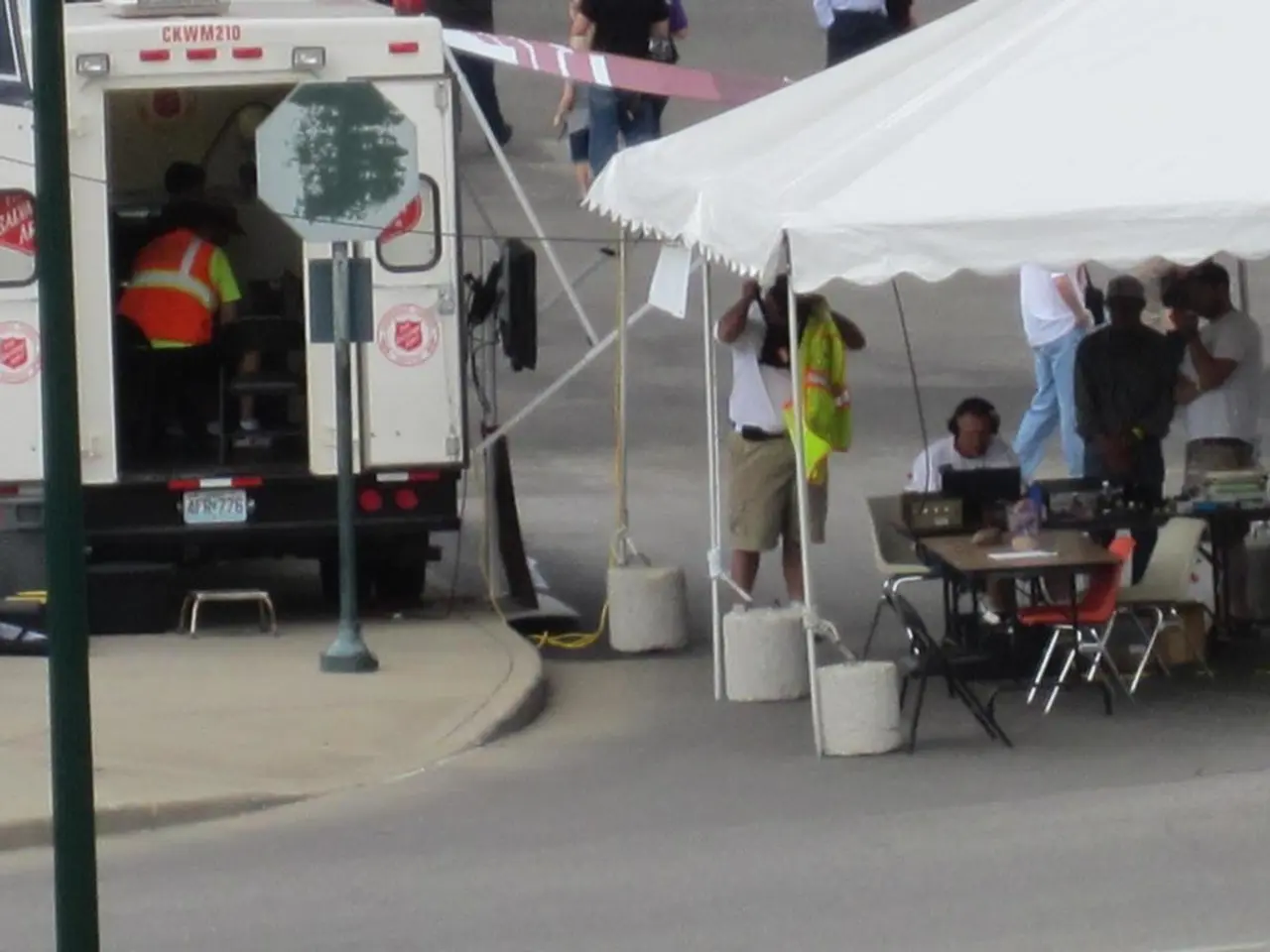Tensions persist in Gaza as a single significant disagreement hinders a potential truce
The ongoing ceasefire negotiations between Hamas and Israel are being facilitated by mediators from Qatar, Egypt, and the United States. Despite a degree of optimism, significant gaps remain, particularly regarding the conditions for ending the 21-month war in Gaza.
**Israeli Military Pullout**
One of the main points of contention is the scope of Israel's military withdrawal from Gaza. Israel has reduced its demand for maintaining a presence in a zone stretching north of the Philadelphi Corridor from 5 km to 1.5 km, bringing it closer to Hamas' demands. However, Israel's proposal for a partial pullout has been rejected by Hamas. Israel also aims to maintain control over the Morag Corridor in southern Gaza, with the intention of creating a 'humanitarian city' between the Morag and Philadelphi Corridors.
**Hostage and Prisoner Exchange**
The negotiations also involve an agreement to release 10 living hostages and the remains of 18 more in exchange for a yet-to-be-agreed-upon number of Palestinian security prisoners. Hamas insists on resolving other issues first before discussing prisoner releases.
**Aid Mechanism and Ceasefire Duration**
Another point of contention is the mechanism for allowing aid into Gaza during the proposed 60-day ceasefire. The ceasefire duration and terms for human aid are crucial for both parties.
**Ending the War**
The overarching issue is the end of the war itself, with both sides acknowledging this as a major hurdle in reaching an agreement. The Israeli Defense Forces (IDF) have reportedly hit 250 "terror targets" in the last 48 hours, including caves, weapons caches, spotter posts, and locations for launching anti-tank missiles.
Unfortunately, the conflict has taken a heavy toll on the civilian population. Over 79 Palestinians have been killed since dawn, according to the UN-recognized numbers from Gaza's Health Ministry, with over 57,000 Palestinians, mostly civilians, having been killed in the war. Additionally, dozens of children have died from malnutrition during Israel's months-long blockade in Gaza.
The ceasefire talks are currently taking place in Doha with help from Qatar, the US, and Egypt. Some improvements have been reported, including the exchange of Israeli hostages for Palestinian prisoners and the sending of emergency aid. The fourth hostage-prisoner exchange between Hamas and Israel took place in Gaza City on February 1, 2025.
The situation in Gaza remains critical, with seven UN agencies warning that fuel shortages have reached a critical level, potentially shutting down relief services and worsening the food situation. The IDF has threatened to intensify operations if a deal is not reached soon.
The aim of these negotiations is clear: to find a solution that brings an end to the violence and provides a path towards peace and stability for all those affected by this conflict.
- The discussion over the Israel-Hamas negotiations includes the debate about the health of the civilian population, with concerns rising due to malnutrition cases among children in Gaza.
- In terms of general news, the ceasefire talks between Israel and Hamas, facilitated by mediators from Qatar, Egypt, and the United States, are currently ongoing to address war-and-conflicts and bring about peace.
- In the realm of politics, a key issue under negotiation is the business of a military withdrawal from Gaza, with Hamas and Israel having different opinions on the scope and jurisdiction.
- The historical context of the ongoing conflict is crucial to understanding the recent ceasefire negotiations, as it has resulted in significant loss of life and destruction, with over 57,000 Palestinians and growing numbers of hostages killed during the war.
- As part of the negotiations, discussions about entertainment and food have also surfaced, with the need for a mechanism to ensure the delivery of humanitarian aid to Gaza during the proposed 60-day ceasefire being a pressing concern for all parties involved.








